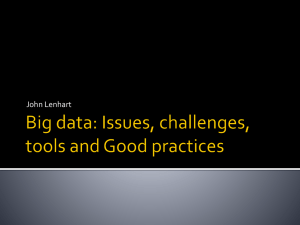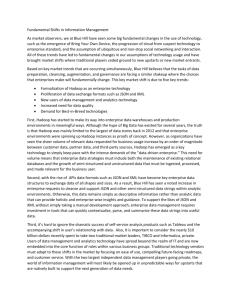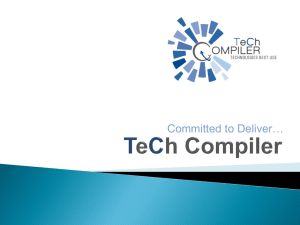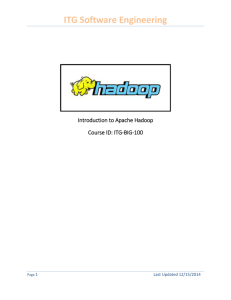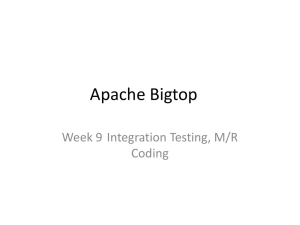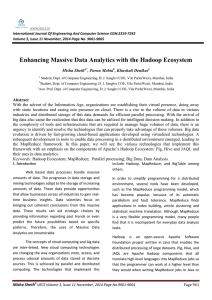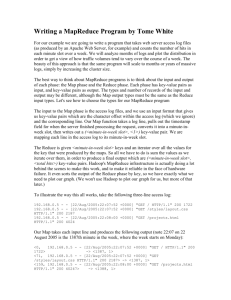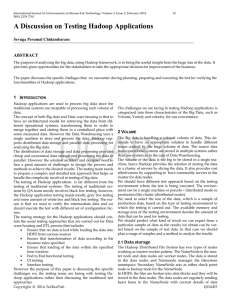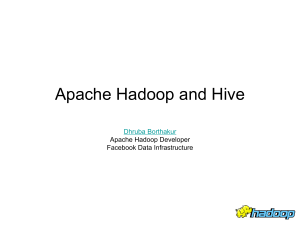Big Data Terms
advertisement
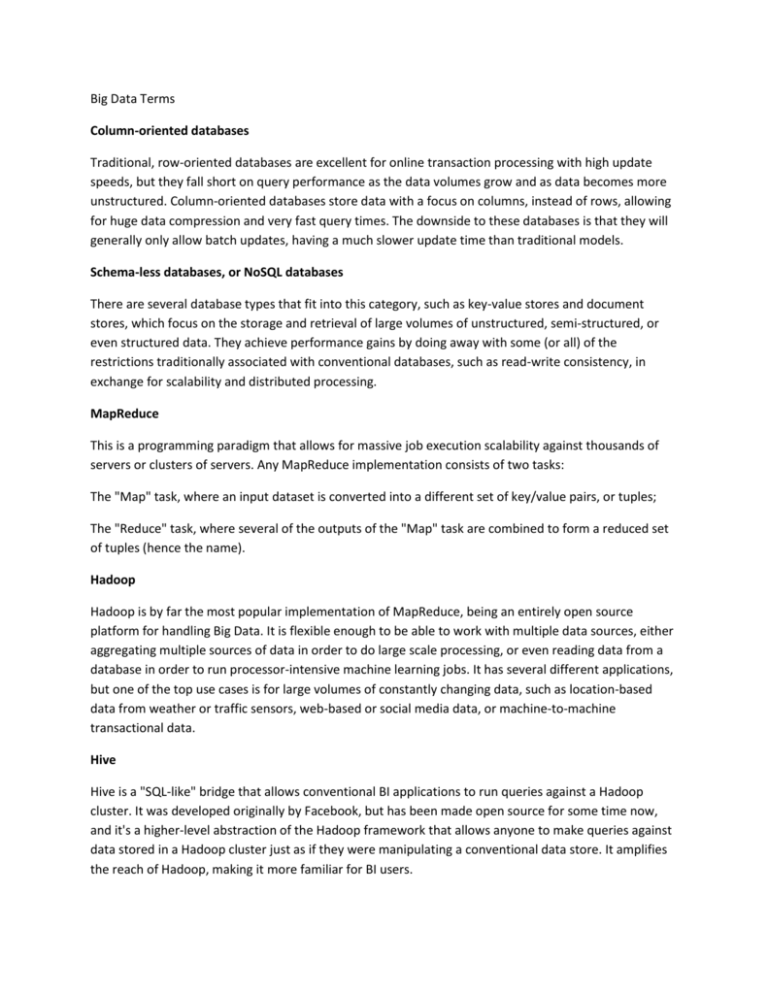
Big Data Terms Column-oriented databases Traditional, row-oriented databases are excellent for online transaction processing with high update speeds, but they fall short on query performance as the data volumes grow and as data becomes more unstructured. Column-oriented databases store data with a focus on columns, instead of rows, allowing for huge data compression and very fast query times. The downside to these databases is that they will generally only allow batch updates, having a much slower update time than traditional models. Schema-less databases, or NoSQL databases There are several database types that fit into this category, such as key-value stores and document stores, which focus on the storage and retrieval of large volumes of unstructured, semi-structured, or even structured data. They achieve performance gains by doing away with some (or all) of the restrictions traditionally associated with conventional databases, such as read-write consistency, in exchange for scalability and distributed processing. MapReduce This is a programming paradigm that allows for massive job execution scalability against thousands of servers or clusters of servers. Any MapReduce implementation consists of two tasks: The "Map" task, where an input dataset is converted into a different set of key/value pairs, or tuples; The "Reduce" task, where several of the outputs of the "Map" task are combined to form a reduced set of tuples (hence the name). Hadoop Hadoop is by far the most popular implementation of MapReduce, being an entirely open source platform for handling Big Data. It is flexible enough to be able to work with multiple data sources, either aggregating multiple sources of data in order to do large scale processing, or even reading data from a database in order to run processor-intensive machine learning jobs. It has several different applications, but one of the top use cases is for large volumes of constantly changing data, such as location-based data from weather or traffic sensors, web-based or social media data, or machine-to-machine transactional data. Hive Hive is a "SQL-like" bridge that allows conventional BI applications to run queries against a Hadoop cluster. It was developed originally by Facebook, but has been made open source for some time now, and it's a higher-level abstraction of the Hadoop framework that allows anyone to make queries against data stored in a Hadoop cluster just as if they were manipulating a conventional data store. It amplifies the reach of Hadoop, making it more familiar for BI users. PIG PIG is another bridge that tries to bring Hadoop closer to the realities of developers and business users, similar to Hive. Unlike Hive, however, PIG consists of a "Perl-like" language that allows for query execution over data stored on a Hadoop cluster, instead of a "SQL-like" language. PIG was developed by Yahoo!, and, just like Hive, has also been made fully open source. WibiData WibiData is a combination of web analytics with Hadoop, being built on top of HBase, which is itself a database layer on top of Hadoop. It allows web sites to better explore and work with their user data, enabling real-time responses to user behavior, such as serving personalized content, recommendations and decisions. PLATFORA Perhaps the greatest limitation of Hadoop is that it is a very low-level implementation of MapReduce, requiring extensive developer knowledge to operate. Between preparing, testing and running jobs, a full cycle can take hours, eliminating the interactivity that users enjoyed with conventional databases. PLATFORA is a platform that turns user's queries into Hadoop jobs automatically, thus creating an abstraction layer that anyone can exploit to simplify and organize datasets stored in Hadoop. Storage Technologies As the data volumes grow, so does the need for efficient and effective storage techniques. The main evolutions in this space are related to data compression and storage virtualization. SkyTree SkyTree is a high-performance machine learning and data analytics platform focused specifically on handling Big Data. Machine learning, in turn, is an essential part of Big Data, since the massive data volumes make manual exploration, or even conventional automated exploration methods unfeasible or too expensive.



